The automotive market has witnessed an evolution in the way families and businesses approach transportation, and two contenders standing out in the high-roof wagon segment are the Ford Tourneo Connect and the Peugeot Rifter. These models promise a blend of practicality and performance, but which one emerges victorious? Let's explore the technical aspects and innovations that set them apart.
Ford Tourneo Connect vs Peugeot Rifter – Which car suits you better?
Both models have their strengths – but which one suits you more?
Compare performance, efficiency, price and space directly: Ford Tourneo Connect or Peugeot Rifter?
Design and Dimensions
Both the Ford Tourneo Connect and the Peugeot Rifter exemplify spaciousness and versatility. The Tourneo Connect measures approximately 4853 mm in length, 1855 mm in width, and 1833 mm in height, making it a formidable player in the high-roof wagon category. On the other hand, the Rifter has a more compact profile with dimensions ranging from 4405 mm to 4755 mm in length, 1848 mm in width, and a height of either 1818 mm or 1837 mm, depending on the variant.
This height gives both vehicles an airy cabin feel, which is ideal for families or groups on the move. The Tourneo Connect also boasts a trunk capacity of up to 1720 liters, significantly outdoing the Rifter's maximum of 1050 liters, making it better suited for hauling larger loads.
Powertrains and Performance
When it comes to engine options, both models offer a variety of choices to cater to different driver preferences. The Ford Tourneo Connect offers a diverse lineup, including petrol, diesel, and plug-in hybrid options, with power outputs ranging from 102 HP to 150 HP. Its engines are coupled with either a manual gearbox or an automatic transmission featuring a dual-clutch setup. The maximum torque reaches a robust 350 Nm, giving it commendable performance.
In comparison, the Peugeot Rifter also offers multiple engine types, including electric, petrol, and diesel versions. Power outputs vary from 102 HP to 136 HP. The electric variant boasts an impressive range of up to 340 km, showcasing Peugeot's commitment to eco-friendly driving without compromising functionality. The Rifter’s engines deliver torque ranging from 205 Nm to 300 Nm, ensuring a responsive driving experience.
Acceleration figures are closely matched, with the Ford Tourneo Connect achieving 0-100 km/h in as little as 11.4 seconds while the Rifter manages it in a competitive 10.8 seconds for its quickest variant.
Fuel Efficiency and Environmental Considerations
Fuel economy is a critical factor in today's automotive landscape, and both models strive to be efficient. The Ford Tourneo Connect offers fuel consumption ranging from 5.4 to 7 L/100 km, depending on the engine choice. The efficient plug-in hybrid option underscores Ford's focus on balancing performance with environmental responsibility.
The Peugeot Rifter shines with an electric variant, achieving consumption figures as low as 19.1 kWh/100 km, making it an ideal choice for eco-conscious consumers. The diesel models also deliver competitive figures, ranging from 5.4 to 6.9 L/100 km.
In terms of emissions, the Tourneo Connect achieves a CO2 efficiency class as good as B, while the Rifter can claim an A rating with its electric model, showcasing its green credentials.
Interior Comfort and Technology
Stepping inside, the interior of the Ford Tourneo Connect emphasizes comfort and technology with generous legroom and high-quality materials. The cockpit features Ford's latest SYNC infotainment system, offering seamless connectivity through Apple CarPlay and Android Auto.
Peugeot's Rifter doesn’t fall short in the tech department either, offering a host of connectivity features, intuitive controls, and customizable ambient lighting, enhancing the overall driving experience for passengers. The cabin space also accommodates seven passengers in certain configurations, ideal for larger families.
Conclusion: Which One to Choose?
Both the Ford Tourneo Connect and the Peugeot Rifter each present unique strengths that cater to different consumer needs. If space, trunk capacity, and engine variety are top priorities, the Tourneo Connect is a worthwhile contender. On the other hand, if eco-friendliness, compactness, and cutting-edge technology are high on your list, the Peugeot Rifter stands out.
Your choice ultimately boils down to personal preference and intended usage, but regardless of the decision, both vehicles promise to deliver an impressive blend of utility and performance in the segment of high-roof wagons.
Here’s where it gets real: The technical differences in detail
Costs and Efficiency:
Price and efficiency are key factors when choosing a car – and this is often where the real differences emerge.
Peugeot Rifter has a to a small extent advantage in terms of price – it starts at 23800 £, while the Ford Tourneo Connect costs 27300 £. That’s a price difference of around 3522 £.
Fuel consumption also shows a difference: Ford Tourneo Connect manages with 0.50 L and is therefore decisively more efficient than the Peugeot Rifter with 5.60 L. The difference is about 5.10 L per 100 km.
As for range, the Peugeot Rifter performs clearly better – achieving up to 339 km, about 220 km more than the Ford Tourneo Connect.
Engine and Performance:
Power, torque and acceleration are the classic benchmarks for car enthusiasts – and here, some clear differences start to show.
When it comes to engine power, the Ford Tourneo Connect has a minimal edge – offering 150 HP compared to 136 HP. That’s roughly 14 HP more horsepower.
In acceleration from 0 to 100 km/h, the Ford Tourneo Connect is slight quicker – completing the sprint in 10.10 s, while the Peugeot Rifter takes 10.80 s. That’s about 0.70 s faster.
In terms of top speed, the Ford Tourneo Connect performs minimal better – reaching 186 km/h, while the Peugeot Rifter tops out at 184 km/h. The difference is around 2 km/h.
There’s also a difference in torque: Ford Tourneo Connect pulls to a small extent stronger with 350 Nm compared to 300 Nm. That’s about 50 Nm difference.
Space and Everyday Use:
Whether family car or daily driver – which one offers more room, flexibility and comfort?
Seats: Peugeot Rifter offers clearly perceptible more seating capacity – 7 vs 5.
In curb weight, Ford Tourneo Connect is minimal lighter – 1542 kg compared to 1561 kg. The difference is around 19 kg.
In terms of boot space, the Ford Tourneo Connect offers noticeable more room – 1720 L compared to 1050 L. That’s a difference of about 670 L.
In maximum load capacity, the Peugeot Rifter performs to a small extent better – up to 3500 L, which is about 395 L more than the Ford Tourneo Connect.
When it comes to payload, Ford Tourneo Connect barely noticeable takes the win – 818 kg compared to 814 kg. That’s a difference of about 4 kg.
Who comes out on top?
Overall, the Ford Tourneo Connect shows itself to be is largely superior and secures the title of DriveDuel Champion.
It convinces with the more balanced overall package and proves to be the more versatile choice for everyday use.
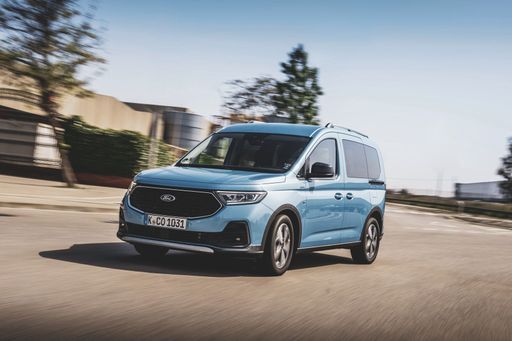 @ Ford Motor Company / Ford Media Center
@ Ford Motor Company / Ford Media Center
Ford Tourneo Connect
Ford Tourneo Connect
The Ford Tourneo Connect represents a versatile option in the people carrier segment, offering a blend of functionality and comfort for family or business use. Its design combines modern aesthetics with the practicality needed for daily operations, making it an appealing choice for those seeking a reliable and adaptable vehicle. Inside, the Tourneo Connect provides a spacious and well-thought-out interior, ensuring a comfortable driving experience for both driver and passengers.
details @ Ford Motor Company / Ford Media Center
@ Ford Motor Company / Ford Media Center
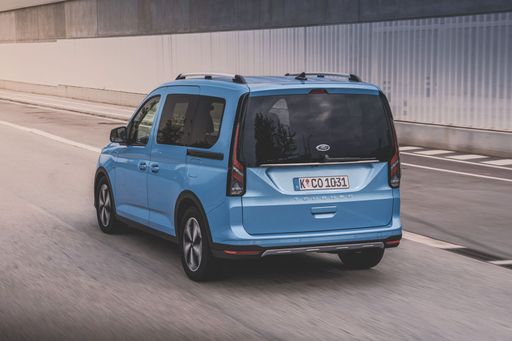 @ Ford Motor Company / Ford Media Center
@ Ford Motor Company / Ford Media Center
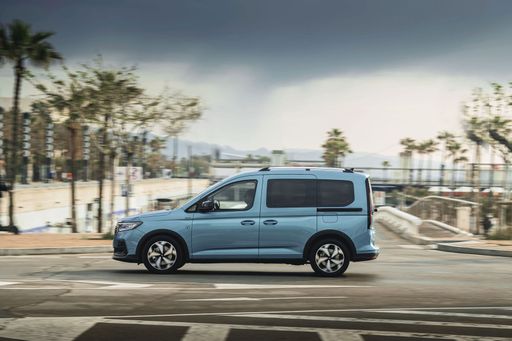 @ Ford Motor Company / Ford Media Center
@ Ford Motor Company / Ford Media Center
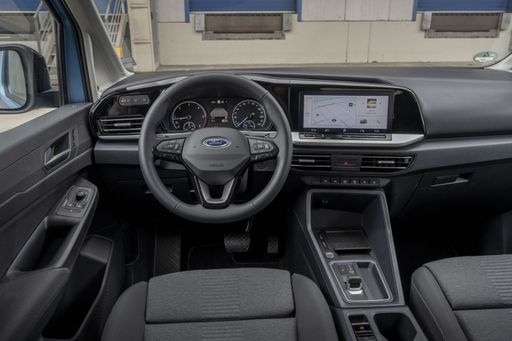 @ Ford Motor Company / Ford Media Center
@ Ford Motor Company / Ford Media Center
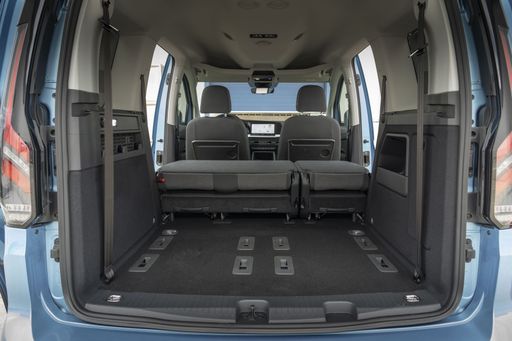 @ Ford Motor Company / Ford Media Center
@ Ford Motor Company / Ford Media Center
Peugeot Rifter
Der Peugeot Rifter beeindruckt mit seinem robusten Design und seiner hohen Vielseitigkeit, die ihn ideal für Familien und Outdoor-Abenteuer macht. Der Innenraum ist geräumig gestaltet und bietet zahlreiche innovative Technologien, die den Komfort und die Sicherheit der Insassen erhöhen. Zudem überzeugt der Rifter mit seiner hervorragenden Fahrdynamik, die sowohl in der Stadt als auch auf längeren Strecken für ein angenehmes Fahrerlebnis sorgt.
details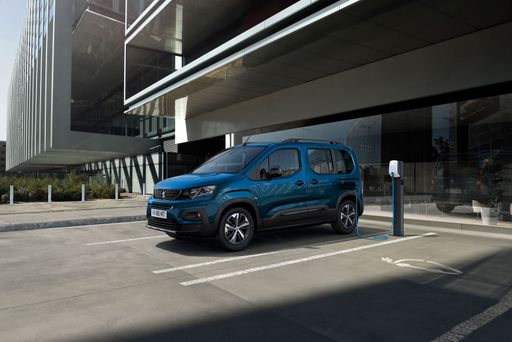 @ Peugeot / Stellantis Media
@ Peugeot / Stellantis Media
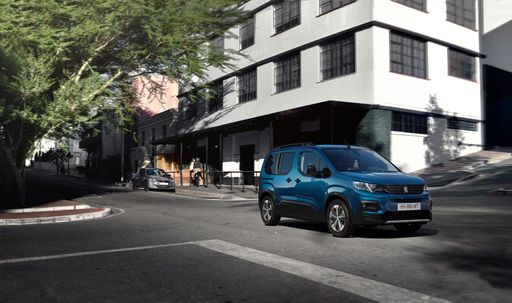 @ Peugeot / Stellantis Media
@ Peugeot / Stellantis Media
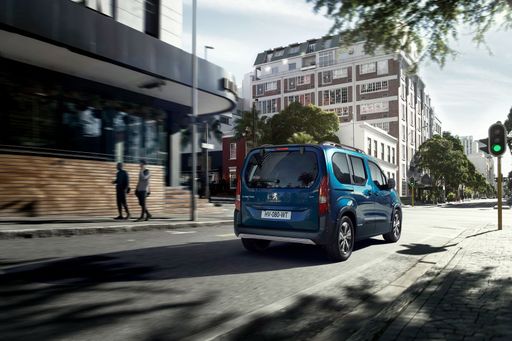 @ Peugeot / Stellantis Media
@ Peugeot / Stellantis Media
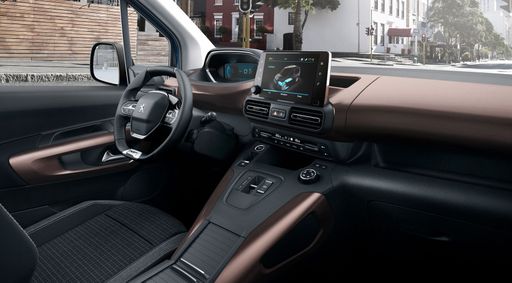 @ Peugeot / Stellantis Media
@ Peugeot / Stellantis Media
 @ Ford Motor Company / Ford Media Center
@ Ford Motor Company / Ford Media Center
|
 @ Peugeot / Stellantis Media
@ Peugeot / Stellantis Media
|
|
|
|
Costs and Consumption |
|
|---|---|
|
Price
27300 - 41900 £
|
Price
23800 - 36600 £
|
|
Consumption L/100km
0.5 - 6.9 L
|
Consumption L/100km
5.6 - 6 L
|
|
Consumption kWh/100km
-
|
Consumption kWh/100km
18.3 - 19.1 kWh
|
|
Electric Range
116 - 119 km
|
Electric Range
328 - 339 km
|
|
Battery Capacity
19.70 kWh
|
Battery Capacity
-
|
|
co2
11 - 164 g/km
|
co2
0 - 158 g/km
|
|
Fuel tank capacity
32 - 50 L
|
Fuel tank capacity
50 L
|
Dimensions and Body |
|
|---|---|
|
Body Type
High Roof Estate
|
Body Type
High Roof Estate
|
|
Seats
5
|
Seats
5 - 7
|
|
Doors
5
|
Doors
4 - 5
|
|
Curb weight
1542 - 1781 kg
|
Curb weight
1561 - 1941 kg
|
|
Trunk capacity
1213 - 1720 L
|
Trunk capacity
322 - 1050 L
|
|
Length
4500 - 4868 mm
|
Length
4405 - 4755 mm
|
|
Width
1855 mm
|
Width
1848 mm
|
|
Height
1833 mm
|
Height
1818 - 1837 mm
|
|
Max trunk capacity
2556 - 3105 L
|
Max trunk capacity
3000 - 3500 L
|
|
Payload
563 - 818 kg
|
Payload
489 - 814 kg
|
Engine and Performance |
|
|---|---|
|
Engine Type
Plugin Hybrid, Petrol, Diesel
|
Engine Type
Electric, Diesel
|
|
Transmission
Automatic, Manuel
|
Transmission
Automatic, Manuel
|
|
Transmission Detail
Dual-Clutch Automatic, Manual Gearbox
|
Transmission Detail
Reduction Gearbox, Manual Gearbox, Automatic Gearbox
|
|
Drive Type
Front-Wheel Drive, All-Wheel Drive
|
Drive Type
Front-Wheel Drive
|
|
Power HP
102 - 150 HP
|
Power HP
102 - 136 HP
|
|
Acceleration 0-100km/h
10.1 - 13.5 s
|
Acceleration 0-100km/h
10.8 - 13.6 s
|
|
Max Speed
175 - 186 km/h
|
Max Speed
132 - 184 km/h
|
|
Torque
220 - 350 Nm
|
Torque
250 - 300 Nm
|
|
Number of Cylinders
4
|
Number of Cylinders
4
|
|
Power kW
75 - 110 kW
|
Power kW
75 - 100 kW
|
|
Engine capacity
1498 - 1968 cm3
|
Engine capacity
1499 cm3
|
General |
|
|---|---|
|
Model Year
2024 - 2025
|
Model Year
2024
|
|
CO2 Efficiency Class
B, E, F
|
CO2 Efficiency Class
A, E, F
|
|
Brand
Ford
|
Brand
Peugeot
|
Is the Ford Tourneo Connect offered with different drivetrains?
Available configurations include Front-Wheel Drive or All-Wheel Drive.
The prices and data displayed are estimates based on German list prices and may vary by country. This information is not legally binding.
